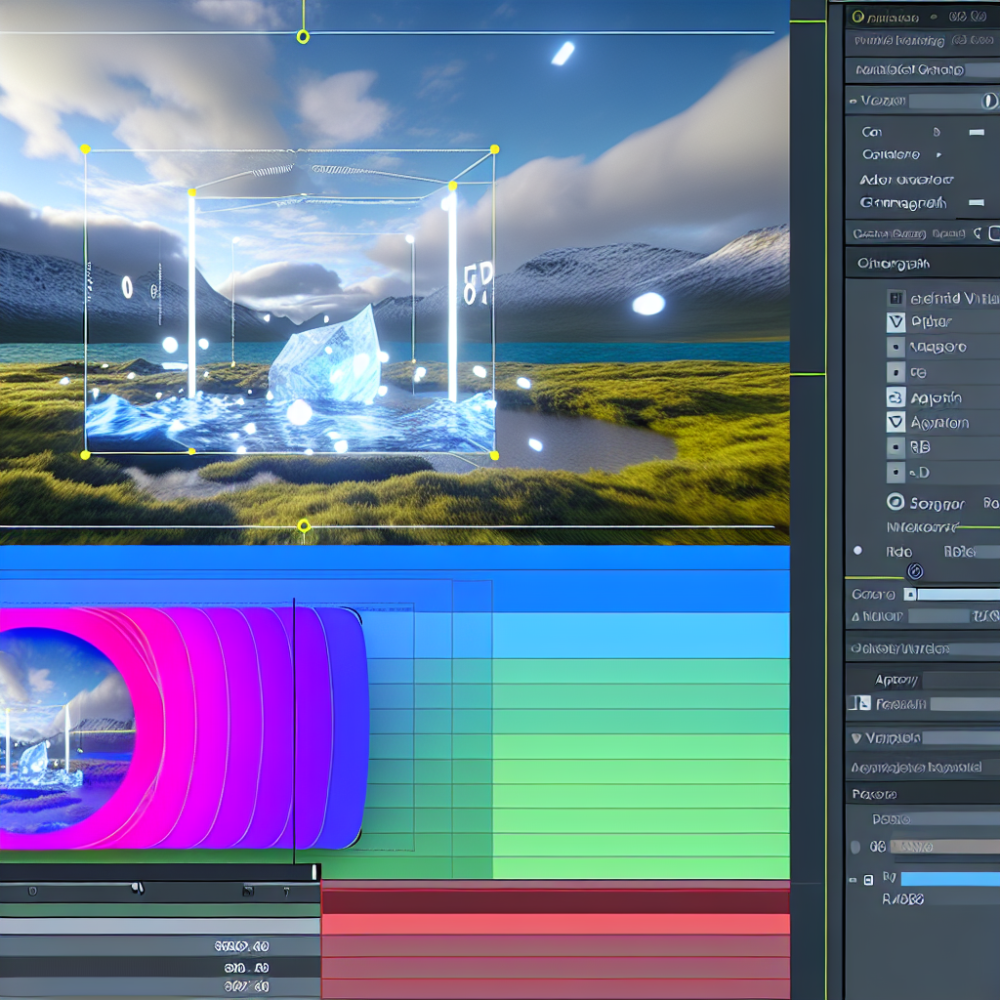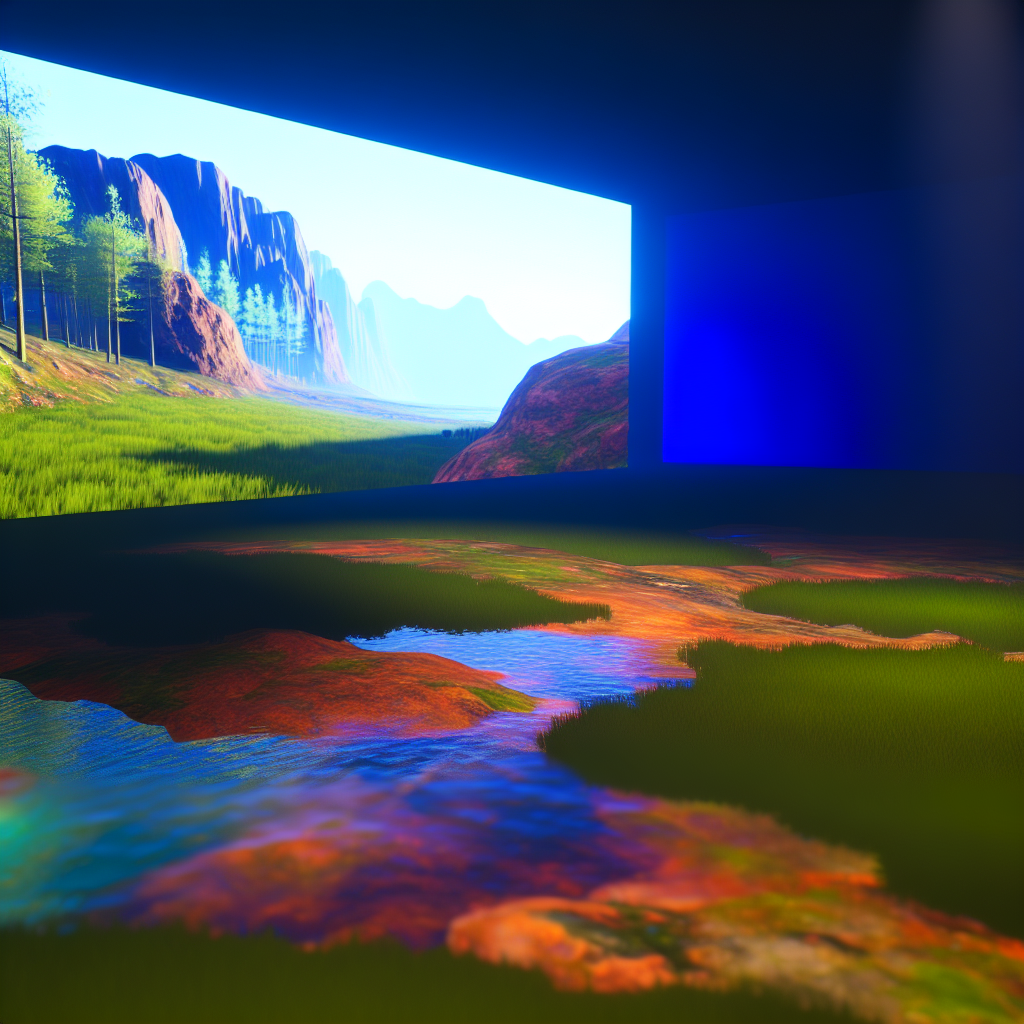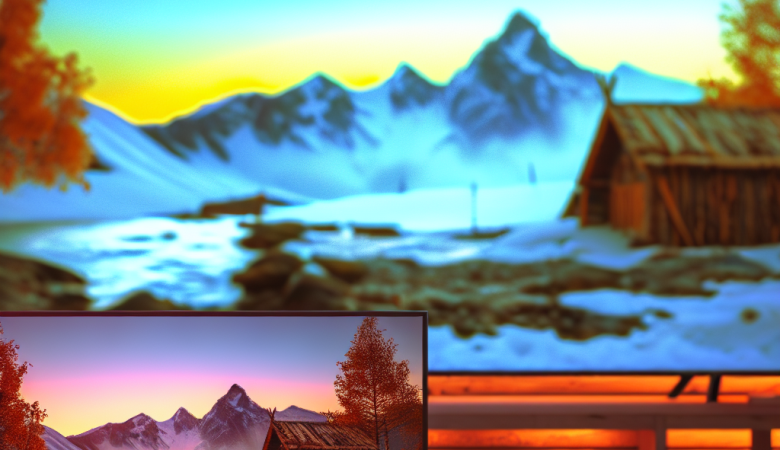The Rise of Virtual Reality Content Creators in the Entertainment Industry
Virtual reality (VR) has become one of the most exciting and rapidly evolving technologies in recent years. With its ability to transport users to entirely new worlds and provide immersive experiences, it has captured the attention of both consumers and businesses alike. As the demand for VR content continues to grow, a new breed of professionals has emerged – virtual reality content creators.
The entertainment industry has been quick to recognize the potential of VR, and content creators have played a crucial role in shaping the immersive experiences that users can now enjoy. These creators are responsible for developing and producing VR content, ranging from games and films to virtual tours and educational experiences.
One of the key reasons for the rise of virtual reality content creators is the increasing accessibility of VR technology. In the past, creating VR content required expensive and specialized equipment, making it inaccessible to all but a few. However, with the advent of consumer-grade VR headsets like the Oculus Rift and HTC Vive, the barriers to entry have been significantly lowered. This has allowed a new wave of creators to experiment with VR and bring their visions to life.
Virtual reality content creators often come from diverse backgrounds, including film, animation, game development, and even architecture. This diversity of skills and expertise allows them to approach VR content creation from different angles, resulting in a wide range of experiences for users to enjoy. For example, a filmmaker may focus on creating cinematic VR experiences that transport viewers into the heart of a story, while a game developer may focus on creating interactive and immersive gaming experiences.
One of the challenges that virtual reality content creators face is the unique nature of VR as a medium. Unlike traditional forms of media, VR requires a different approach to storytelling and user engagement. In VR, users are not passive observers but active participants in the experience. This means that creators must consider how to guide users through the virtual world, ensuring that they have a meaningful and engaging experience.
To address this challenge, virtual reality content creators have developed innovative techniques and tools. For example, they may use spatial audio to create a more immersive and realistic audio experience, or they may employ interactive elements to allow users to interact with the virtual environment. These techniques help to enhance the sense of presence and immersion, making the VR experience more compelling and memorable.
Another important aspect of virtual reality content creation is the need for collaboration. Creating VR content often requires a multidisciplinary team, including artists, designers, programmers, and sound engineers. Each member of the team brings their unique skills and expertise to the project, working together to create a seamless and immersive experience for users.
In conclusion, virtual reality content creators are playing a vital role in shaping the immersive experiences that users can now enjoy. With the increasing accessibility of VR technology and the diverse skills of these creators, the possibilities for VR content are endless. However, the unique nature of VR as a medium presents its own set of challenges, which creators must overcome through innovative techniques and collaboration. As VR continues to evolve, virtual reality content creators will undoubtedly continue to push the boundaries of what is possible, creating new and exciting experiences for users to explore.
How Virtual Reality Content Creators are Revolutionizing Gaming Experiences
Virtual reality (VR) has taken the world by storm, revolutionizing the way we experience entertainment. One of the key players in this revolution is the virtual reality content creators. These talented individuals are shaping immersive experiences that transport users to new worlds and push the boundaries of what is possible in gaming.
Virtual reality content creators are at the forefront of this technological advancement, using their creativity and technical skills to develop virtual worlds that captivate and engage users. They are responsible for designing and building the environments, characters, and storylines that make VR gaming experiences so compelling.
One of the most significant contributions of virtual reality content creators is their ability to create realistic and immersive environments. Through the use of advanced graphics and sound design, they can transport users to places they could only dream of. Whether it’s exploring ancient ruins, diving into the depths of the ocean, or battling aliens on distant planets, virtual reality content creators have the power to make these experiences feel incredibly real.
In addition to creating visually stunning environments, virtual reality content creators also play a crucial role in developing lifelike characters. They use motion capture technology to capture the movements and expressions of real actors, bringing their virtual counterparts to life. This level of realism adds a whole new dimension to gaming, allowing players to interact with characters in a way that was previously unimaginable.
Furthermore, virtual reality content creators are constantly pushing the boundaries of storytelling in gaming. They are not only creating visually stunning worlds but also crafting compelling narratives that draw players in and keep them engaged. By combining elements of traditional storytelling with the immersive nature of virtual reality, they are able to create experiences that are truly unforgettable.
The impact of virtual reality content creators goes beyond just gaming. They are also making significant contributions to other industries such as education, healthcare, and training. In education, virtual reality content creators are developing immersive learning experiences that allow students to explore historical events or visit far-off places without leaving the classroom. In healthcare, they are creating simulations that help train medical professionals in complex procedures. And in training, virtual reality content creators are developing realistic scenarios that allow employees to practice their skills in a safe and controlled environment.
The work of virtual reality content creators is not without its challenges. Creating immersive experiences requires a deep understanding of both technology and storytelling. It also requires a significant investment in equipment and software. However, the rewards are well worth it. Virtual reality content creators have the opportunity to shape the future of entertainment and create experiences that were once only possible in our wildest dreams.
In conclusion, virtual reality content creators are revolutionizing gaming experiences by pushing the boundaries of what is possible in virtual reality. Through their creativity and technical skills, they are able to create immersive environments, lifelike characters, and compelling narratives that transport users to new worlds. Their work extends beyond gaming, making significant contributions to education, healthcare, and training. While the challenges are significant, the rewards are even greater. Virtual reality content creators have the power to shape the future of entertainment and create experiences that will leave a lasting impact on users.
Exploring the Impact of Virtual Reality Content Creators on Education and Training
Virtual reality (VR) has emerged as a powerful tool in various industries, including education and training. With its ability to create immersive experiences, VR has the potential to revolutionize the way we learn and acquire new skills. Behind these immersive experiences are virtual reality content creators, who play a crucial role in shaping the future of education and training.
Virtual reality content creators are individuals or teams that specialize in developing VR content. They use a combination of technical skills, creativity, and storytelling to create virtual environments that engage and educate users. These creators are responsible for designing and building the virtual worlds that users can explore, interact with, and learn from.
One of the key impacts of virtual reality content creators on education and training is the ability to provide hands-on experiences in a safe and controlled environment. For example, in medical training, VR can simulate surgical procedures, allowing students to practice and refine their skills without the risk of harming real patients. Similarly, in engineering or construction training, VR can recreate complex scenarios, enabling students to troubleshoot and problem-solve in a realistic setting.
Furthermore, virtual reality content creators can tailor the learning experience to individual needs and preferences. By incorporating adaptive learning techniques, VR content can adapt to the user’s progress and provide personalized feedback and guidance. This personalized approach enhances the effectiveness of education and training, as it allows learners to focus on areas where they need improvement and progress at their own pace.
Another significant impact of virtual reality content creators is the ability to transport learners to places and situations that would otherwise be inaccessible. For example, history students can virtually visit ancient civilizations, witnessing historical events firsthand. Geography students can explore different landscapes and ecosystems, gaining a deeper understanding of the world. By breaking the barriers of time and space, VR content creators open up new possibilities for immersive learning experiences.
Moreover, virtual reality content creators can foster collaboration and teamwork in education and training. Through multiplayer VR experiences, learners can interact with each other in the virtual world, solving problems and working together towards a common goal. This collaborative aspect not only enhances engagement but also develops essential skills such as communication, leadership, and problem-solving, which are crucial in today’s interconnected world.
As virtual reality technology continues to advance, so does the role of virtual reality content creators. They are constantly pushing the boundaries of what is possible, exploring new techniques and technologies to create even more immersive and impactful experiences. From incorporating haptic feedback to integrating artificial intelligence, virtual reality content creators are at the forefront of innovation in education and training.
In conclusion, virtual reality content creators are shaping the future of education and training by creating immersive experiences that enhance learning and skill acquisition. Their ability to provide hands-on experiences, personalize learning, transport learners to inaccessible places, foster collaboration, and drive innovation makes them invaluable in the field of education. As virtual reality continues to evolve, the role of virtual reality content creators will only become more critical in shaping the way we learn and experience the world.
Virtual Reality Content Creators: Pushing Boundaries in Storytelling and Narrative Experiences
Virtual Reality Content Creators: Shaping Immersive Experiences
Virtual reality (VR) has revolutionized the way we experience digital content. With its ability to transport users to entirely new worlds and provide immersive experiences, VR has become a powerful tool for storytelling and narrative experiences. Behind these captivating virtual worlds are the virtual reality content creators, who are pushing the boundaries of storytelling and shaping the future of immersive entertainment.
Virtual reality content creators are the masterminds behind the creation of VR experiences. They are responsible for designing and developing the virtual environments, characters, and narratives that make VR experiences come to life. These creators use a combination of technology, creativity, and storytelling skills to craft immersive experiences that engage and captivate users.
One of the key challenges that virtual reality content creators face is the need to create a seamless and believable virtual world. Unlike traditional media, VR places users directly into the story, making it crucial for creators to design environments that feel real and interactive. This requires a deep understanding of spatial design, 3D modeling, and animation techniques to create a convincing virtual environment.
In addition to creating realistic environments, virtual reality content creators also need to develop compelling narratives that engage users on an emotional level. Unlike traditional storytelling mediums, VR allows users to actively participate in the story, making it essential for creators to design narratives that adapt to user actions and choices. This requires a new approach to storytelling, where creators need to consider multiple branching paths and outcomes to provide a truly immersive and interactive experience.
To achieve this level of interactivity, virtual reality content creators often collaborate with other professionals, such as writers, game designers, and programmers. This multidisciplinary approach allows creators to leverage the expertise of different individuals to create a cohesive and engaging VR experience. By combining their skills and knowledge, these creators can push the boundaries of storytelling and create experiences that blur the line between reality and fiction.
Virtual reality content creators also play a crucial role in shaping the future of VR technology. As the technology continues to evolve, creators are constantly exploring new ways to enhance the immersive experience. This includes experimenting with new interaction methods, such as hand tracking and haptic feedback, as well as integrating other emerging technologies, such as artificial intelligence and augmented reality, into VR experiences.
Furthermore, virtual reality content creators are also at the forefront of addressing the ethical and social implications of VR. As VR becomes more mainstream, creators are faced with the responsibility of ensuring that their content is inclusive, diverse, and respectful. They need to consider factors such as representation, accessibility, and user safety to create experiences that are enjoyable and meaningful for all users.
In conclusion, virtual reality content creators are shaping the future of immersive entertainment. Through their creativity, technical expertise, and storytelling skills, they are pushing the boundaries of storytelling and narrative experiences. By creating realistic environments, compelling narratives, and collaborating with other professionals, these creators are crafting immersive experiences that transport users to new worlds. As VR technology continues to evolve, virtual reality content creators will play a crucial role in shaping the future of this exciting medium.







Leave a Reply
You must be logged in to post a comment.